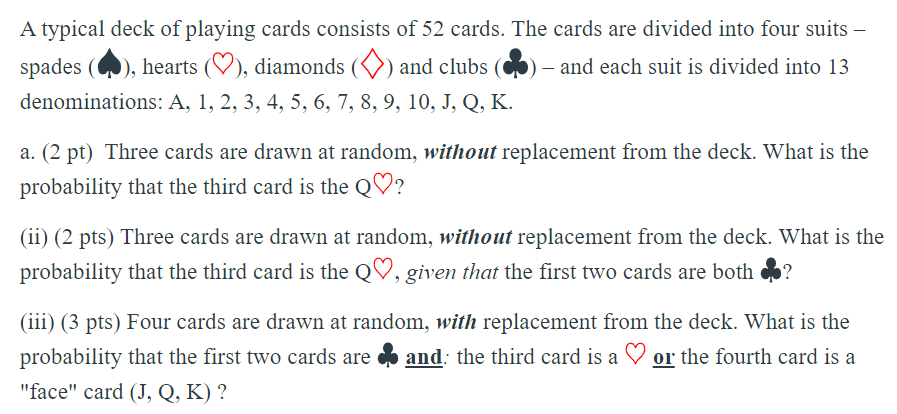Home /
Expert Answers /
Statistics and Probability /
a-typical-deck-of-playing-cards-consists-of-52-cards-the-cards-are-divided-into-four-suits-pa465
(Solved): A typical deck of playing cards consists of 52 cards. The cards are divided into four suits \( - \ ...
A typical deck of playing cards consists of 52 cards. The cards are divided into four suits \( - \) denominations: A, 1, 2, 3, 4, 5, 6, 7, 8, 9, 10, J, Q, K. a. (2 pt) Three cards are drawn at random, without replacement from the deck. What is the probability that the third card is the \( \mathrm{Q} O \) ? (ii) (2 pts) Three cards are drawn at random, without replacement from the deck. What is the probability that the third card is the \( \mathrm{Q} \mathrm{O} \), given that the first two cards are both \( \mathbf{c} \) ? (iii) (3 pts) Four cards are drawn at random, with replacement from the deck. What is the probability that the first two cards are \( \mathbf{0} \underline{\text { and }} \) : the third card is a \( \mathrm{O} \underline{\mathbf{o r}} \) the fourth card is a "face" \( \operatorname{card}(\mathrm{J}, \mathrm{Q}, \mathrm{K}) \) ?
Expert Answer
i) Three cards are drawn at random, without replacement from the deck. What is the probability that the third card is the Q heart. Ans: Probability=(5
